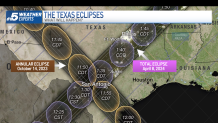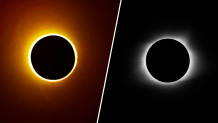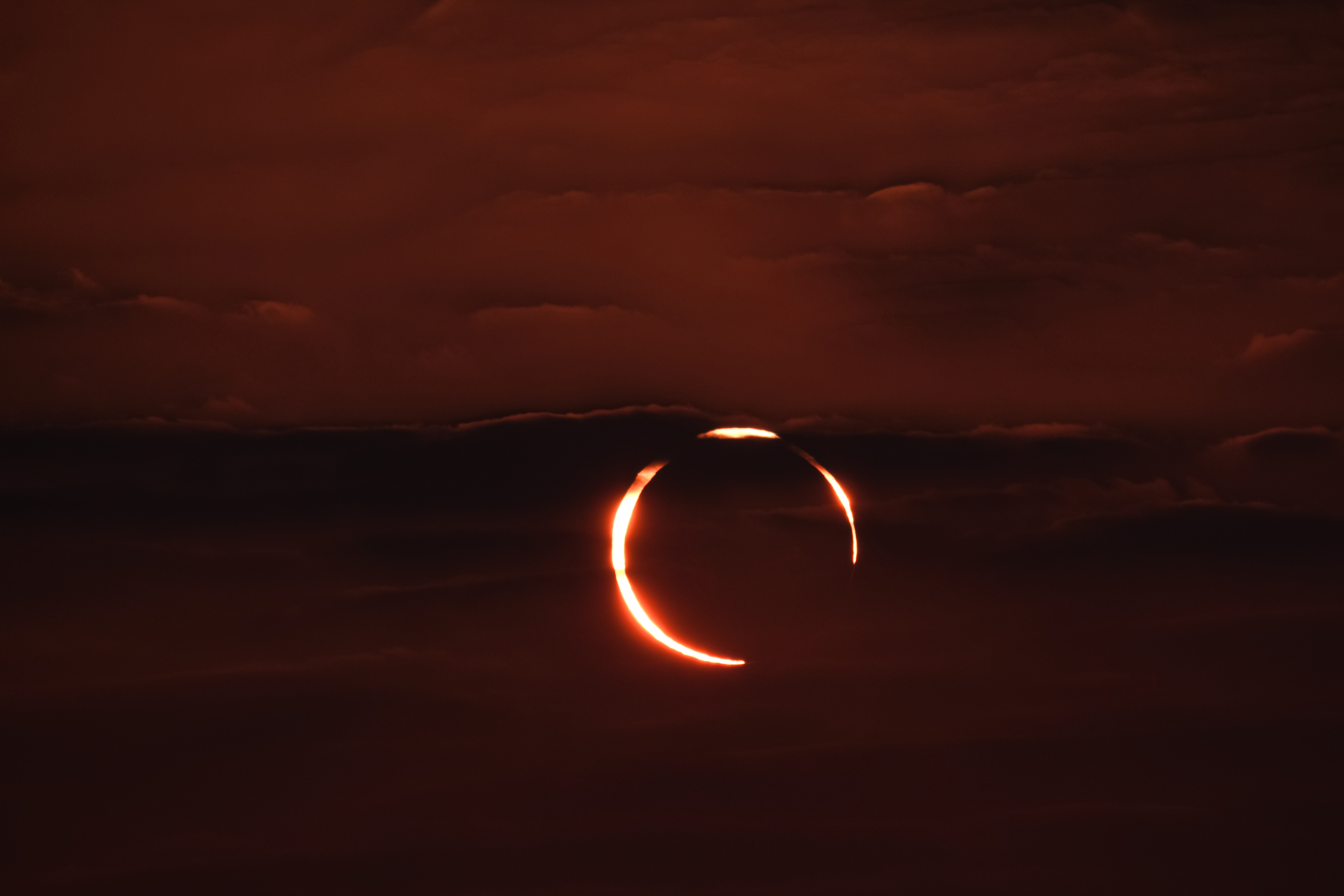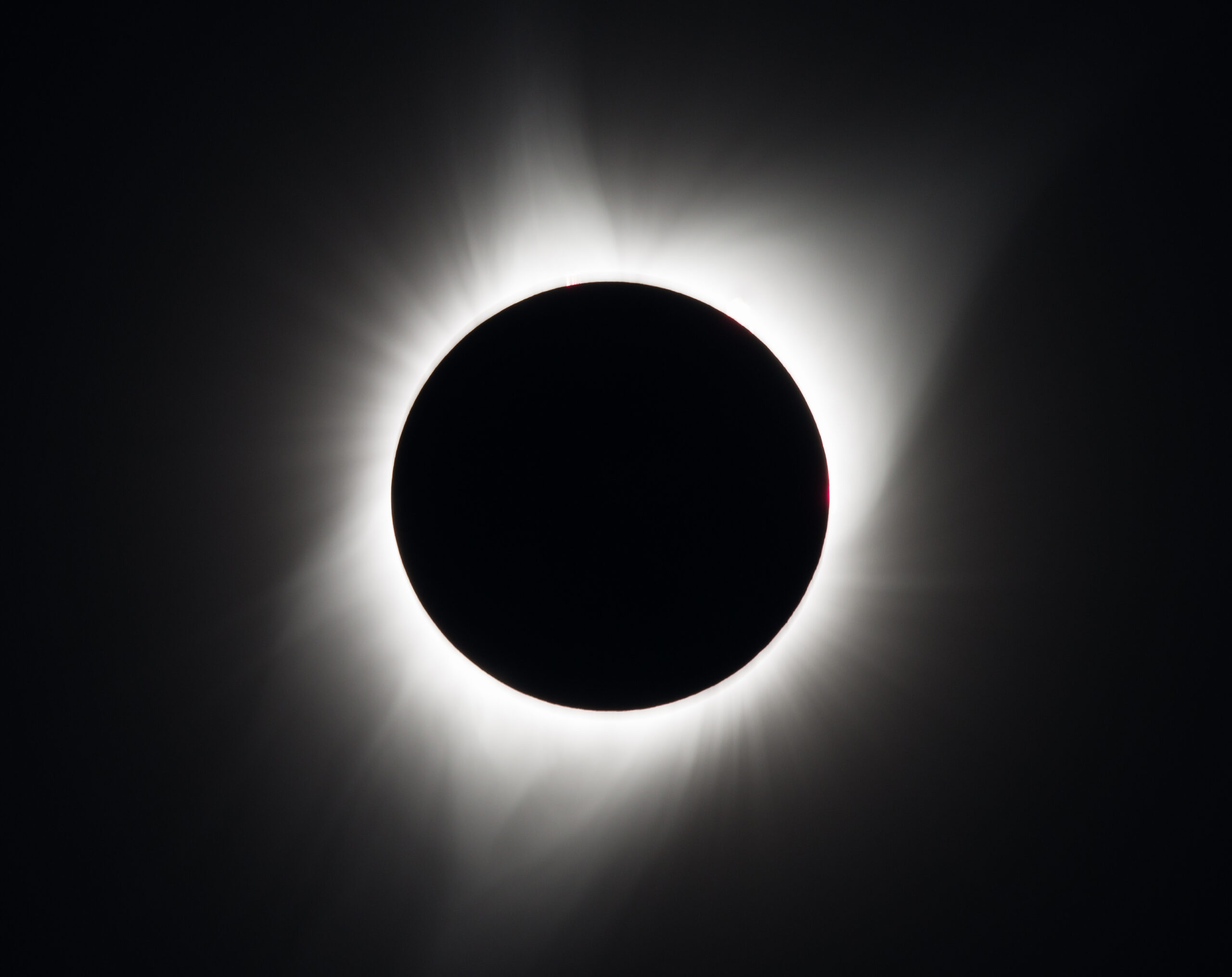Over the next seven months, two eclipses will be visible in North Texas. The first, an annular solar eclipse, will arrive this Saturday, and on April 8, 2024, a total eclipse will occur.
Saturday's annular eclipse will be the first in Texas since 2012.
An annular eclipse is when the moon obscures the sun but is too far from the Earth to completely cover it, leaving a ring of sunlight known as the “ring of fire.” Saturday's eclipse is only visible across a narrow path of the US stretching from Oregon to Texas.
The maximum obscurity will be in West Texas and in the Rio Grande Valley, though we will still see a partial eclipse in North Texas. In North Texas, we're expecting the sun to be between 80% and 85% obscured, leaving a crescent-shaped sun.
Get DFW local news, weather forecasts and entertainment stories to your inbox. Sign up for NBC DFW newsletters.
The sky will dim here and the skies are expected to be clear giving us good visibility. The eclipse will begin around 11 a.m. but will peak for about 20 minutes beginning at about 11:45 a.m.

WHERE TO WATCH
You can watch the annular eclipse from anywhere outdoors, but what's important is that you have the proper protective eyewear when looking at the sun.
You should never look directly at the sun without protection and normal sunglasses just don't offer enough. You will need protective eyewear made for eclipses to look directly at the eclipse.
If you don't have a pair of glasses, NBC 5 Meteorologist Samantha Davies shot the video below showing how to make an eclipse viewer at home.
You can also use a kitchen colander -- with the sun at your back, hold the colander out and look at the shadows of the eclipse on the ground as the light passes through the colander. You can also see evidence of the eclipse by looking at the shadows of tree leaves on concrete.
If you want to do more than view the eclipse from your yard, there are several places holding viewing parties across North Texas.
At the Fort Worth Museum of Science and History, they are planning several eclipse-related activities, giving lessons on space science and more.
In Dallas, The Perot Museum of Nature and Science is partnering with the Carnegie Institution for Science and will host a number of eclipse-related activities including hands-on STEM activities and games. There will also be live music and food trucks on site. See more on this event here.
The Dallas Arboretum’s Rory Meyers Children’s Adventure Garden planned several activities around the eclipse, but tickets were limited and a message on the arboretum's website said the event had sold out.

TOTAL ECLIPSE COMING IN APRIL 2024
For North Texas, the main show is April 8, 2024, with a rare total solar eclipse.
A total eclipse is when is when the moon passes between the sun and earth completely blocking the face of the sun. The sky will darken as if it were dawn or dusk.
This will be the first total solar eclipse over North Texas since 1878 and the next one won't darken the skies over Dallas-Fort Worth anytime soon.
April's total eclipse will be visible in the United States from Texas to Maine.



